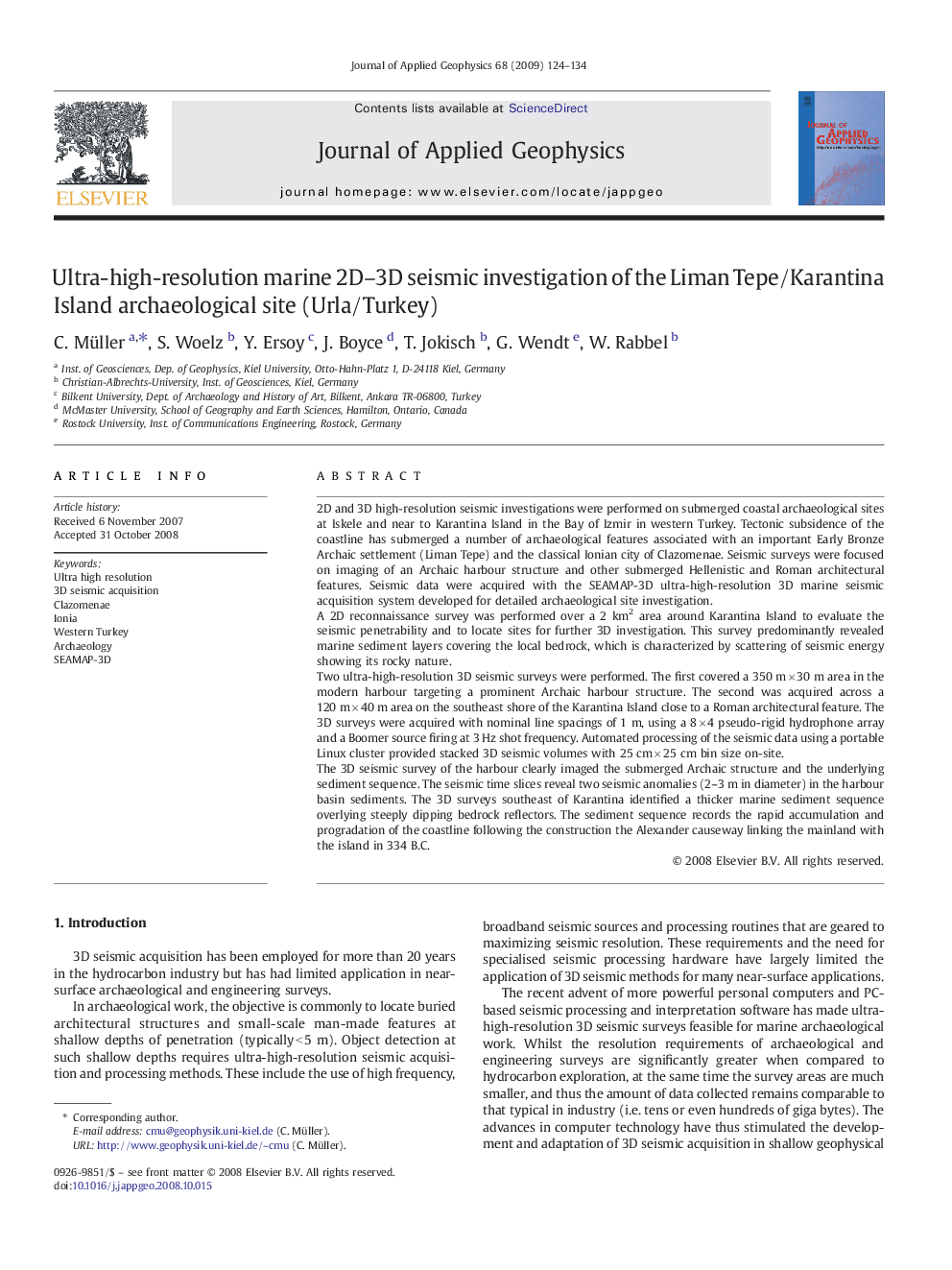| Article ID | Journal | Published Year | Pages | File Type |
|---|---|---|---|---|
| 4740822 | Journal of Applied Geophysics | 2009 | 11 Pages |
2D and 3D high-resolution seismic investigations were performed on submerged coastal archaeological sites at Iskele and near to Karantina Island in the Bay of Izmir in western Turkey. Tectonic subsidence of the coastline has submerged a number of archaeological features associated with an important Early Bronze Archaic settlement (Liman Tepe) and the classical Ionian city of Clazomenae. Seismic surveys were focused on imaging of an Archaic harbour structure and other submerged Hellenistic and Roman architectural features. Seismic data were acquired with the SEAMAP-3D ultra-high-resolution 3D marine seismic acquisition system developed for detailed archaeological site investigation.A 2D reconnaissance survey was performed over a 2 km2 area around Karantina Island to evaluate the seismic penetrability and to locate sites for further 3D investigation. This survey predominantly revealed marine sediment layers covering the local bedrock, which is characterized by scattering of seismic energy showing its rocky nature.Two ultra-high-resolution 3D seismic surveys were performed. The first covered a 350 m × 30 m area in the modern harbour targeting a prominent Archaic harbour structure. The second was acquired across a 120 m × 40 m area on the southeast shore of the Karantina Island close to a Roman architectural feature. The 3D surveys were acquired with nominal line spacings of 1 m, using a 8 × 4 pseudo-rigid hydrophone array and a Boomer source firing at 3 Hz shot frequency. Automated processing of the seismic data using a portable Linux cluster provided stacked 3D seismic volumes with 25 cm × 25 cm bin size on-site.The 3D seismic survey of the harbour clearly imaged the submerged Archaic structure and the underlying sediment sequence. The seismic time slices reveal two seismic anomalies (2–3 m in diameter) in the harbour basin sediments. The 3D surveys southeast of Karantina identified a thicker marine sediment sequence overlying steeply dipping bedrock reflectors. The sediment sequence records the rapid accumulation and progradation of the coastline following the construction the Alexander causeway linking the mainland with the island in 334 B.C.
